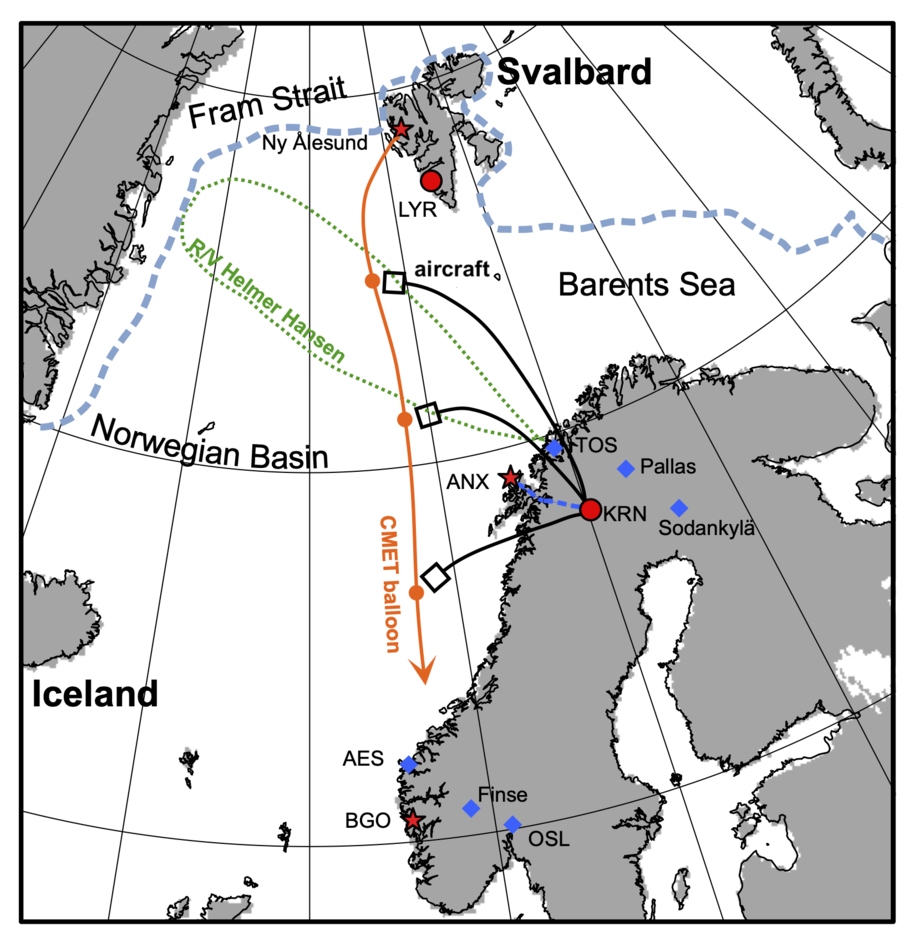ISLAS2022 field campaign
The field campaign ISLAS2022 (21 March to 10 April 2022) focussed on the entire water cycle with Lagrangian sampling flights between Svalbard and the coast of Northern Norway.
The origin and fate of Arctic water vapour
Main content
The ISLAS2022 aircraft campaign is the central objective of the ERC-funded project ISLAS. The main scientific aim is to collect a dataset within the natural laboratory of the Nordic seas that allows to observe isotope fractionation during a single complete local water cycle within a cold-air outbreak. The most significant piece of equipment is an instrument to measure the stable isotope composition of water vapour in-situ from the aircraft. However, it only obtains its full value by an array of complementary measurements, including research vessel, precipitation sampling, and measurements at several supersites.
During Lagrangian flight experiments in the ISLAS2022 campaign, we aim to observe the evolution of the isotope composition of the airmass as it undergoes mixing and fractionation processes (Science aim 1, Table 1). Observation of this local water cycle in addition requires the initial and boundary conditions for this process. This will be obtained from probing the isotope composition of the evaporation flux over open ocean, off the sea ice edge (Science aim 2), the isotope composition of free-troposphere air above the growing boundary layer (Science aim 3), and the isotope composition of cloud water and precipitation during condensation processes (Science aim 4). In combination, this will enable the assessment of how well second-order parameters of the stable isotope composition are during this entire local water cycle (Science aim 5). Achieving this aim for the challenging parameter 17O-excess will require a means to obtain liquid water samples with a volume >0.1 ml. Since aircraft measurements of the stable isotope composition have never been performed in this region, the spatial representativeness of measurement signals at different elevations and throughout time, in particular in relation to the network of stations being installed in the Arctic, will be very valuable (Science aim 6). During situations of warm-air intrusions into the Arctic, it will be valuable to perform Lagrangian flight experiments and to assess the isotope signature of water vapour with extratropical and subtropical origin at different elevations (Science aim 7). We will use the opportunity to collect Setup of ISLAS aircraft campaign 2022 measurements that can be used for verification of satellite-borne remote-sensing of δD. Figure 1 summarises the inter-relation of the different measurement activities planned during ISLAS 2022.
During the field campaign, we also asked citizens to contribute to our field sampling by collecting surface snow. Read here about the results from the citizen science activity during ISLAS2022.
